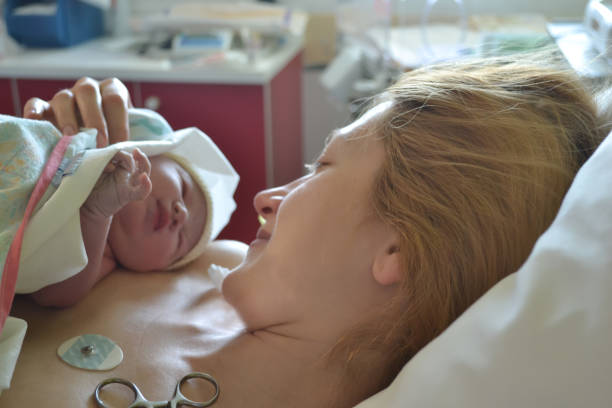Neonatal sepsis is a life-threatening condition that occurs when a newborn’s body is overwhelmed by an infection. Early-onset neonatal sepsis (EOS) refers to infections acquired within the first 72 hours of life, often resulting from exposure to pathogens during pregnancy, labor, or delivery. It is a leading cause of neonatal morbidity and mortality, especially in low-birth-weight or premature infants. Early recognition and treatment are critical to improving outcomes.

1. What is Early-Onset Neonatal Sepsis (EOS)?
EOS is a bacterial, viral, or fungal infection that occurs within the first 72 hours after birth. It primarily involves:
- Bloodstream Infections: Systemic spread of pathogens causing septicemia.
- Associated Conditions: Such as pneumonia or meningitis.
2. Common Causes of EOS
- Bacterial Pathogens:
- Group B Streptococcus (GBS): A leading cause of EOS, often transmitted from the mother during delivery.
- Escherichia coli (E. coli): Common in preterm infants or those with low birth weight.
- Listeria monocytogenes: Rare but serious, often acquired through maternal foodborne infections.
- Viral Infections: Such as herpes simplex virus (HSV) acquired during delivery.
- Fungal Infections: Rare but possible in immunocompromised or very low-birth-weight infants.
3. Risk Factors for EOS
- Maternal Risk Factors:
- Prolonged rupture of membranes (>18 hours).
- Maternal fever or infections (e.g., chorioamnionitis, urinary tract infections).
- GBS colonization without adequate intrapartum antibiotic prophylaxis.
- Infant Risk Factors:
- Prematurity or low birth weight.
- Birth asphyxia or other perinatal complications.
4. Symptoms of Early-Onset Sepsis
Symptoms in neonates can be nonspecific but include:
- Respiratory Distress: Rapid breathing, grunting, or cyanosis.
- Lethargy or Irritability: Reduced activity or excessive fussiness.
- Feeding Issues: Poor sucking or intolerance to feeds.
- Temperature Instability: Hypothermia or fever.
- Jaundice: Especially if it appears earlier than expected.
5. Diagnosis of EOS
Early diagnosis is critical for effective treatment:
- Blood Cultures: Identify causative pathogens.
- Complete Blood Count (CBC): Detects signs of infection, such as elevated white blood cells or immature cells.
- C-reactive Protein (CRP): An inflammatory marker often elevated in sepsis.
- Lumbar Puncture: Performed if meningitis is suspected.
- Chest X-rays: To identify accompanying pneumonia.
6. Treatment of EOS
Treatment begins as soon as EOS is suspected:
- Antibiotic Therapy:
- Broad-spectrum antibiotics (e.g., ampicillin and gentamicin) are initiated while awaiting culture results.
- Therapy is tailored based on the identified pathogen and antibiotic susceptibility.
- Supportive Care:
- Oxygen therapy for respiratory distress.
- Intravenous fluids to maintain hydration and blood pressure.
- Monitoring and managing complications such as hypoglycemia or organ dysfunction.
7. Prevention of EOS
- Maternal Screening and Prophylaxis:
- Routine screening for GBS during pregnancy (35–37 weeks gestation).
- Administration of intrapartum antibiotics to GBS-positive mothers.
- Sterile Delivery Practices:
- Ensuring hygiene during delivery to minimize exposure to pathogens.
- Timely Identification:
- Monitoring infants born to mothers with risk factors for early signs of sepsis.
8. Complications of Untreated EOS
Without timely treatment, EOS can lead to severe outcomes, including:
- Meningitis: Infection spreading to the brain and spinal cord.
- Septic Shock: Severe infection leading to organ failure.
- Long-Term Issues: Neurological deficits, developmental delays, or chronic health problems.
Conclusion
Early-onset neonatal sepsis is a serious but manageable condition when recognized and treated promptly. By focusing on preventive measures such as maternal screening, hygienic delivery practices, and vigilant newborn monitoring, we can reduce the incidence and improve outcomes for affected infants. Early intervention remains the cornerstone of saving lives and preventing complications.







